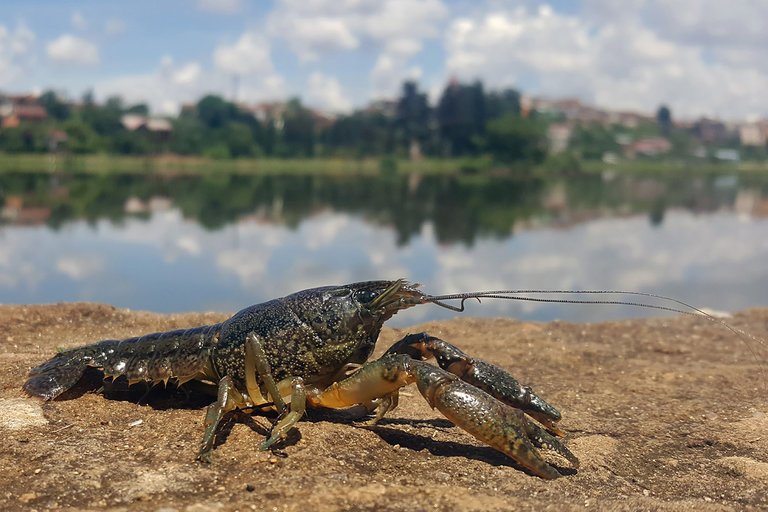Play all audios:
By Tom Baxter By far the weirdest story in the world this year — it makes “The Shape of Water” sound plausible — begins with a little critter which lives only on the tributaries of the
Satilla River in Georgia and Florida. More than a quarter century ago, as nearly as scientists have been able to piece the story together through DNA research, some examples of _Procambarus
fallax_, the slough crayfish, were taken from the river where they are native and ended up in a German aquarium. In 1995, a rare fish collector told Frank Lyko, a geneticist at the German
Cancer Research Center in Heidelberg, about some strange specimens he’d purchased called “Texas crayfish.” They were very big, and produced a lot of eggs — all of them produced eggs. This
would go on to be recognized as an entirely new species, _Procambarus virginalis_, the marbled crayfish, or Marmokrebs in German. Researchers have speculated that a crayfish from the Satilla
may have ended up in a tank with a related species from somewhere else in the world, increasing the genetic randomness of their tryst. What they are sure of is that a single encounter
between two mudbugs produced a mutant female crayfish capable of cloning herself. Every egg she produced, and all those in succeeding generations, is an exact genetic duplicate of that first
mutation. By the time scientists had traced the origins of this new species back to the Satilla, marbled crayfish, which made a nuisance of themselves in collector’s tanks, had spread into
rivers and lakes across much of Germany and Eastern Europe. They’ve turned up as far away as Japan, and in Madagascar, despite considerable harvesting for food, they are overwhelming the
existing species of crayfish. The new species hasn’t shown up in the Satilla, which is one way we know the mutation happened somewhere else. But Georgia has more than its share of foreign
invaders to contend with. For all that our politics centers around human illegal immigration, the cumulative impact from migrating plants, animals and bugs may be our greater concern,
particularly in a time when conditions are ripe for them. Some of the species we still class as invasives have been around a long time, longer even than kudzu, which got here in the late
1800s. Many species, like the Chinese Tallow tree, which arrived in the 1700s, were imported because somebody thought they were a good idea. Over time, however, invasives have crowded out
native species and created more problems than they solve. More recent arrivals have shown their ability not only to establish themselves, but to change their behavior to adapt to their new
environs. Scientists from the University of Georgia’s Warnell School of Forestry recently conducted the largest-ever study of coyotes in the Southeast noted a change in the habits of these
recent arrivals. The first coyotes to arrive in the state were mostly scavengers, preying on the newborn fawns of white-tail deer in the spring and the occasional suburban pet. Michael
Chamberlain, the lead scientist on the study, estimated there now are abut now some 90,000 “transients” in Georgia, moving along the edges of urban settlement and scavenging for food. But
back in the country, in the “deep, wet woods,” as Chamberlain put it, a much larger population of coyotes, perhaps a quarter-million in this state, have become “residents,” staking out their
territory and beginning to hunt white-tail deer year-round in an organized fashion. If it has been a while since you’ve heard of someone hitting a deer with their car, this may be part of
the reason. Coyotes have had enough impact on the deer population, and thus the deer-hunting population, that the state has launched its second-annual “Georgia Coyote Challenge,” which
offers trappers the opportunity to exchange coyote carcasses for the chance to win a lifetime hunting license. Even aside from the contest, hunters in Georgia are killing an estimated 30,000
to 40,000 coyotes a year, without having a severe impact on the growing population. Invasive species look for weaknesses in established environments, for changes they can exploit. That
means that in a time of climate change and environmental distress, newcomers can move faster, and the weeds, trees, bugs and other species that have been here a while can gain new strength.
If we aren’t yet being overrun by mutant crayfish, we still have plenty to worry about. _RELATED POSTS_

